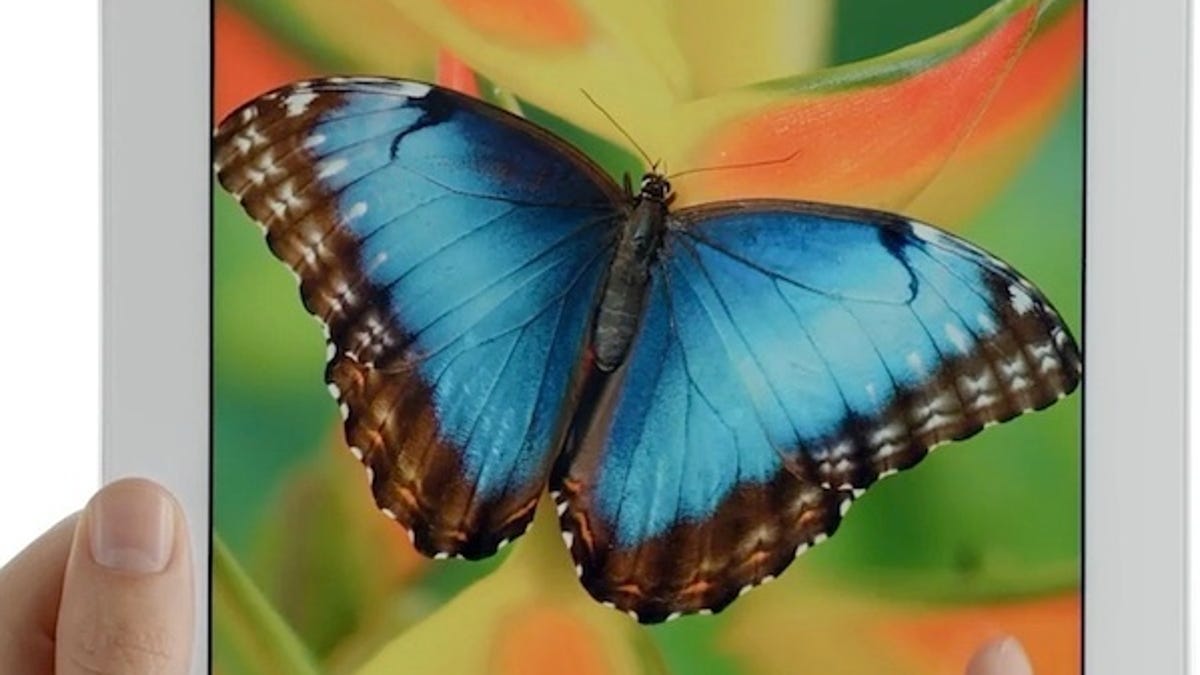iPad's display is cutting edge--and a challenge for manufacturers
How cutting edge is the new iPad's display? Cutting edge enough that it's a real challenge to make.

The new iPad's display is so avant-garde that Apple could have trouble keeping up with demand if it exceeds recent iPad 2 levels, according to a display analyst.
Cutting-edge tech: It's gratuitous at this point to say that the new iPad's 2,048x1,536 display is by any measure amazing--boasting a resolution typically found on large 24-inch class desktop displays.
Exactly how this is achieved is explained in a NPD DisplaySearch discussion about how Super High Aperture technology--by increasing aperture ratio--allows Apple to squeeze four times the number of pixels into the new display compared to the iPad 2.
Apple explains it as follows in a video. "When you squeeze four times the pixels into the same space, signals can get crossed, colors become distorted and images get fuzzy. To solve this we had to elevate the pixels onto a different plane and separate them from the signals."
(And note that the panel itself, to maintain brightness, has twice the number of LEDs compared with the iPad 2, according to DisplaySearch.)
Manufacturing for Samsung, LG Display, and Sharp more of a challenge than usual: "It's the first of its kind. And you have three manufacturers that are pretty good at making displays and they're having difficulty supplying it," said Richard Shim, an NPD DisplaySearch analyst.
"It's mainly Samsung that's supplying the displays," according to Shim.
The other two manufacturers are LG Display and Sharp. "We know that LG is having some problems" but should begin volume production soon, Shim said.Sharp is facing the biggest hurdles. "LG's problems are not as severe as Sharp's," Shim said. "We hear [Sharp] may switch back to amorphous silicon," and away from the rumored IGZO panels.
"They (Sharp) have been very ambitious. Think about it: it's a very high resolution display being built at a Gen 8 fab and on a whole new [manufacturing] process," he said. A Gen 8 fab is the most advanced category of display fabrication facility.
Can Apple meet surging demand? So, the question is, how many panels does Apple need to meet demand?
"It's a global launch and we know there's a lot of demand in Asia Pacific," Shim said.
Shim continued. "Apple said in the second half that they were at supply-demand parity. So, in Q3 we estimate they shipped about 13.6 million iPads and for Q4 we're estimating they shipped about 18.7 million. So it's somewhere in that range," he said.
Of course, only time will tell if there is a supply crunch for the new iPad and whether, for instance, the iPad 2 at the lower $399 price eats up some that demand.
The new iPad goes on sale March 16. The line forms to the right.

